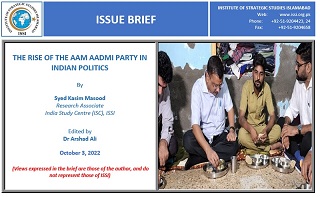In the past few election cycles, Indian politics has adopted a bipolar nature, with the Indian National Congress and the Bharatiya Janata Party being the main competitors vying for power. However, over the last few years, a new force has been emerging in Indian domestic politics. The rapid decline of the Congress has allowed numerous parties to capitalize on the misfortunes of India’s oldest party. Various regional parties have been able to enhance their control in their respective states. However, the Aam Admi Party (AAP) became the first such party to expand its authority into two states. With a thumping victory in Punjab and the prospect of making serious inroads in Gujarati politics, the AAP is emerging as a force to be reckoned with.
A byproduct of the 2011 anti-corruption protests, the AAP has positioned itself on an anti-corruption populist platform. The party’s leader, Arvind Kejriwal, a former employee of the Indian Revenue Service, is currently serving as the Chief Minister of Delhi. In fact, the party’s performance over the last seven years has allowed it to expand its base. By prioritizing human development and tax reforms, the Delhi government has been able to drastically improve the state’s public education system and created a conducive business environment. While the rise of the party may be considered to be a positive development in Indian politics, one must also look at a number of other factors such as Kejriwal’s own use of Hindutva idioms and how his rise may actually play into the BJP’s hands. In fact, in the upcoming Lok Sabha election, the AAP may cut into the vote share of the dilapidated INC and increase the likelihood of a third term for Narendra Modi.
















